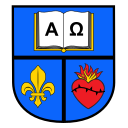The following text was taken from the book “Halálra szántak – mégis élünk!” (“They wanted us to die – but we are still alive!”) by the Hungarian Catholic priest Ferenc Tomka (Szent István Társulat, 2005), p. 133-135. These people died in the first two decades of Communism in Hungary. I have removed the italics from the original text and added the boldface. Some terms are explained at the end of the article.
The canon of Vác, Kálmán Széll, had to die because he had carried out his bishop’s decree, which the state did not like. Bishop Pétery forbade his priests to go to the first peace convention when it was announced, because this could mean legalising the inhuman and godless regime. After some did attend the meeting, the bishop commissioned three of his assistant priests – Kálmán Széll, József Brusznyay and György Oetter – to question them. In retaliation, all three were arrested. Széll Kállmán died in the labour camp. […]
The Pauline monk Ferenc Ács attempted to flee after hearing of the deportation of his fellow monks. The secret police tracked him down and shot him. To cover up the murder, they later threw his body in front of a train. Gunshot wounds were found at the autopsy.
Jesuit Father Benjamin Jakab died in the internment camp in Kistarcsa.
Gusztáv Gáspár, a distinguished religious teacher from Budapest, fled to Vienna after his release from internment. The communist leadership considered him so dangerous that they sent an agent to lure him from the American zone in Vienna to the Soviet zone. There he was captured, brought home and sentenced again. He died in Vác prison.
József Kelemen Papp (1900-1953) was a teacher at the Cistercian order’s high school in Baja. Several of his students founded a Christian association. The secular leaders of the association were executed, and Father Papp was sentenced to prison as an accomplice, where he died in 1953.
József Steurer (1891-1954), parish priest of Moson, was a pastor who loved his parishioners and was known as “everything to everyone”. The communists warned him to leave the village because he was in their way (too many people loved him). Because he would not leave his parishioners alone, the police repeatedly harassed and threatened him. He was arrested and died on 7 January 1954 in the prison hospital in Budapest. He is buried in the cemetery in Rákoskeresztúr, plot 307.
The story of the death of the parish priest Dr. László Zsíros was brought to our attention by a fellow priest, before the last witnesses died, around the year 2000. The names and stories of many lesser-known martyrs and confessors were not even recorded by the chroniclers of the subject, who often took great risks. Father Zsíros was given the task of taking care of the pastoral care of Petőfiszállás-Szentkút, succeeding Ferenc Vezér and the Paulines, who had been deported and sentenced to death. He was soon threatened by the police, and in 1954, on a trip to Budapest, he was attacked and beaten up by “unknown assailants”. He was taken to the hospital on Széher Road (where, as was typical of the time, no record of him remains) and died of his injuries. His story, along with that of many similar martyrs, was unknown to the public until recently. A tomb was erected for him in his birthplace, Boldog, but it was destroyed under communism; it was only restored after the change of regime. His village remembers him as a martyr.
[…]
Lajos Kenyeres (1908-1957), the parish priest of Tiszavárkony, was a zealous pastor, much loved by his religious students and his parishioners. From the pulpit, he sometimes protested outspokenly against the attacks on the country and the Church. This did not go down well with the strongly communist leadership in the area. Once he came home from a religious education on his bicycle on the banks of the Tisza River. He was beaten up, shot in the back of the head and thrown into the Tisza. They found his bicycle and his rosary on the bank of the Tisza, covered in blood. His body was fished out of the Tisza, showing signs of torture: wounds and and the places of the knocked out teeth.
[…]
Ferenc Kovács (1932-1958), assistant pastor of Gencsapát, who had been ordained only three years before, was repeatedly threatened by the ÁVH because of his zealous and effective pastoral work. Finally, during an interrogation, they beat him so badly that he died of his injuries in the hospital. This was not allowed to be made public at the time, because of the ban and the threats by the police.
After repeated imprisonment and torture, Franciscan Father Béla Hetény Somogyvári (1921-61) became a religious education teacher in Szentendre, beloved by young people. Then the ÁVO began to harass him again. Beatings and interrogations followed from the spring of 1961 on Andrássy Road. After an interrogation, the police took him home. After the police left, the father was found hanging from the door handle of his room.
László Szabó (1934-1966), assistant pastor in Vác , was repeatedly summoned, interrogated and persecuted by the ÁVO, and disappeared from his apartment in November 1966. In January he was found dead in a cave in the Bükk Mountains. In Soviet-style dictatorships, disappearances of priests and the appearance of suicide were common in all countries.
Some terms
ÁVH: Államvédelmi Hatóság (“State Defense Authority”, before that called ÁVO (“State Defense Division”)), the Stasi-like secret police in Hungary under Communism
“peace priests”: a Hungarian Communist-led movement of Catholic priests loyal to the state
Andrássy Road 60: headquarters of the ÁVH in Budapest, today a museum commemorating the victims of past dictatorships

The Cathedral of Győr in Hungary. Image by Istvan on Flickr under the CC-BY-NC-ND 2.0 license, here.
